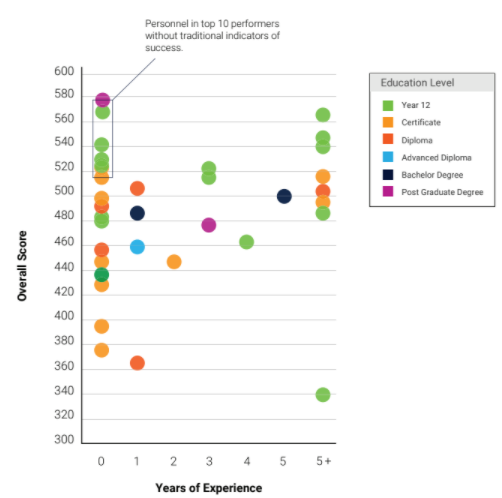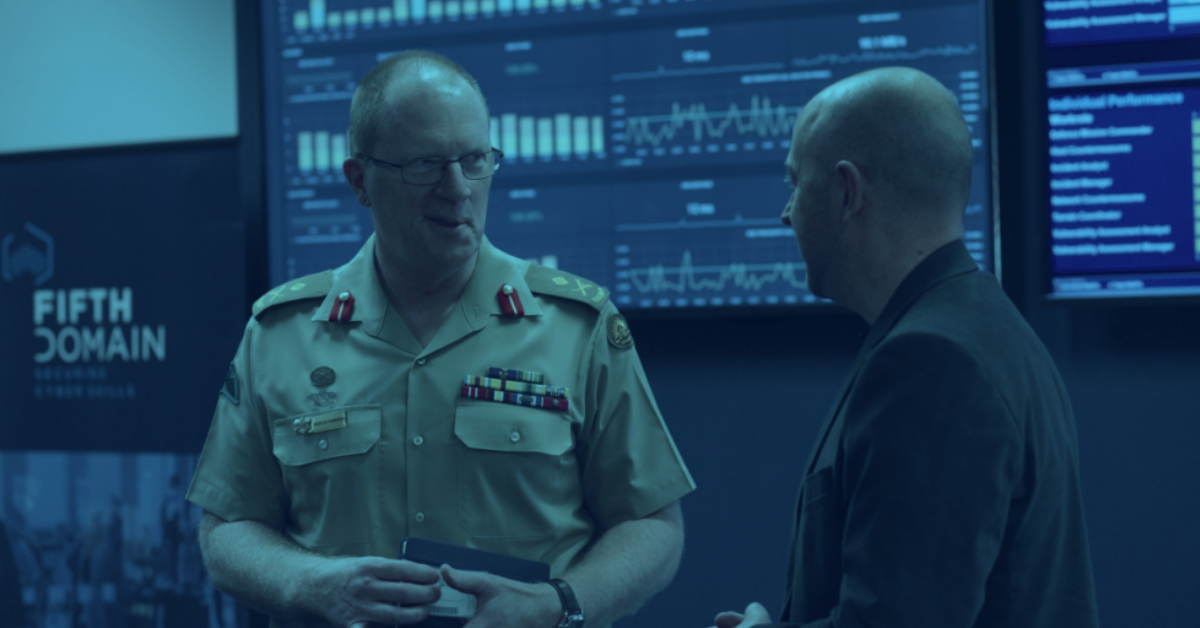FifthDomain chosen to lead delivery of the Australian Defence Force’s first domestic, fully online collective cyber operator training program.
In 2020, the Information Warfare Division of the Department of Defence turned to FifthDomain to rapidly redesign and lead joint cyber training for personnel across the Navy, Army, and Air Forces.
The Information Warfare Division is responsible for overcoming threats to Australia’s national interests in the information environment, and building cyber skills is a major contributor to that.
COVID-19 stops international training exercise
When international travel restrictions were imposed by countries across the globe due to COVID-19, the Australian Defence Force had to rethink the delivery of the 2020 Accelerated Defensive Cyber Training (ADCT) Program.
Traditionally undertaken in the United States, the final cohort of trainees were prevented from departing Australia to participate in this sophisticated Program.
Instead, the 2020 training program led by FifthDomain demonstrated Australia’s home-grown capability to deliver the complex and sophisticated cyber training required by Defence.
Rapid innovation delivers Australian first
To overcome this hurdle, the Information Warfare Division collaborated with FifthDomain to rapidly reconfigure the collective cyber training, utilizing entirely sovereign capabilities.
FifthDomain brought together a group of innovative, sovereign cyber companies to tailor a solution for 48 Navy, Army, and Air Force personnel dispersed across the country.
During a six-week intensive program, FifthDomain delivered a mix of individual and collective cyber training through their technical platform. FifthDomain provided tailored range environments similar to Defence and whole-of-government networks. Exercises were designed to similar the real-world threats and incidents faced by the Australian Government and Defence Forces.
Trainees had to overcome the challenge of deploying and configuring blue tools on unfamiliar networks and experience what it is like to operate in a contested environment. The program culminated in the simulation of a real-time, high-tempo cyber attack with a live OPFOR (red team).
Benefits of simulated cyber training
Developing cyber ‘muscle memory’ is one of the advantages of simulated cyber training. For Defence, one of the key objectives was to develop standing operating procedures to the point where their personnel can effectively operate in the real world.
During the hands-on simulations, the exercise control (EXCON) team reviewed whether trainees were following standing operating procedures to respond effectively and appropriately to different threats.
Exercising cybersecurity teams in controlled environments provides the ability to stop and ‘do over’ scenarios, embed correct procedures, and speed up accurate response times.
Identifying new talent to transition into cyber
One of the added benefits of FifthDomain’s platform is the mapping of technical skill progression. Tasks and challenges across all training environments throughout the six-week program were consistently measured against the same skills frameworks.
The resulting data insights and analytics identified several high-performing individuals that didn’t fit traditional measures of competencies (i.e. years of experience or level of education).

Despite being in positions such as Clerk and Tank Commander, these trainees demonstrated high potential to transition to cyber-related work roles.
This demonstrates how the FifthDomain platform supports talent identification. Platform data enables evidence-based decisions about lateral transfer of staff into cyber work roles, talent management, and promotion of staff – all of which aids staff retention.
Joint training vital to ADF cyber readiness
For Defence, the value of joint cyber training is that it encourages a single approach to cyber warfare across all services.
Joint training uplifts cyber skills across all the Defence Forces and builds collaboration at the tactical level. This includes sharing techniques, tactics, and procedures (TTPs); along with exposure to, and incorporation of, new tool suites.
Joint training enables Defence to undertake gap analysis of technical skills to aid strategic workforce management and recruitment. It ensures mixed service teams can perform at the same baseline, using a common tool suite, and the same TTPs.
Successful customer outcomes
For Defence’s Information Warfare Division, the outcome of the 2020 ADCT program was a success: despite the significant disruption of the pandemic, ADF cyber operators still received high quality and sophisticated training, maintaining the ADF’s preparedness to effectively fight and win in the information environment.
Developing home-grown expertise is a key objective of the Australian Government as it focuses on building sovereign cyber capability to generate jobs, defend Australia, and export these solutions to the Asia Pacific region and around the world.
In addition, four personnel were identified as being highly suitable to transition into cyber-related work roles.






